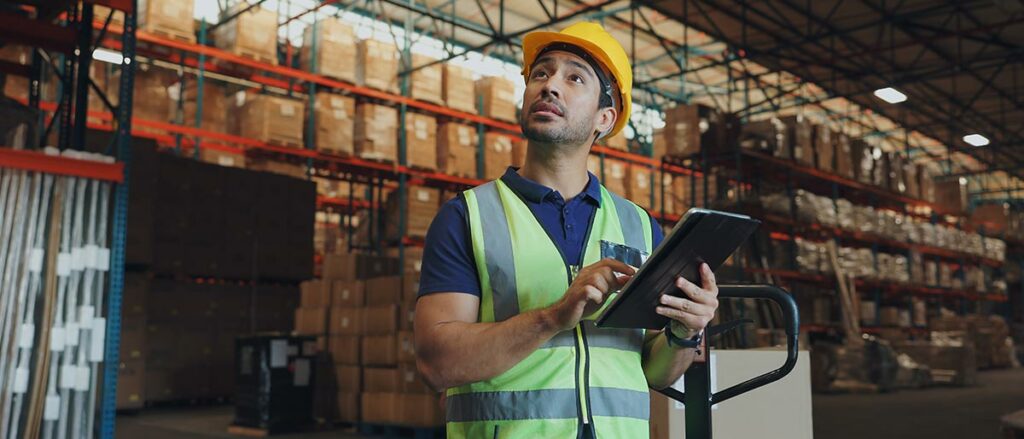Safety inspections are a critical part of any construction project. They help protect workers, ensure compliance with UK regulations, and keep projects on track from the initial groundwork to the final handover. As the construction industry continues to face complex challenges—tight deadlines, evolving safety standards, and increased regulatory scrutiny—having a clear inspection process in place, supported by modern facilities management software, is more important than ever.
This guide outlines what a construction site inspection involves, the benefits of conducting regular checks, and how digital tools like Velappity can streamline the inspection process for improved safety, compliance, and project success.
What is a Construction Site Inspection?
A construction site inspection is a formal check carried out to assess whether the site, materials, workforce, and activities meet defined safety and quality standards. Inspections are typically carried out by a site manager, health and safety officer, or qualified site inspector and cover everything from protective equipment and scaffolding to waste management, hazardous materials, and contractor activities.
Different types of inspections take place throughout the construction phase. These include:
- Health and safety inspections
- Quality control inspections
- Completion works handover inspections
- Building regulation inspections
- Environmental and waste handling reviews
Construction inspections ensure that activities are in line with approved plans, safety procedures are being followed, and all work is carried out in accordance with building codes and planning permissions.
The Benefits of Regular Safety Inspections
Regular inspections provide both immediate and long-term benefits, helping teams across the construction process—from project managers to contractors—reduce risk, avoid delays, and deliver safe, high-quality outcomes.
1. Preventing Accidents and Identifying Hazards Early
Inspections allow project teams to identify potential hazards before they result in accidents. Issues such as missing signage, improper use of personal protective equipment (PPE), unsafe access points, or exposed wiring can be caught early, reducing the likelihood of injuries or fatalities.
2. Ensuring Regulatory Compliance
UK construction sites are subject to extensive legislation governed by the Health and Safety Executive (HSE). Regular inspections help ensure compliance with safety regulations, building standards, and environmental laws. Non-compliance can lead to fines, work stoppages, or reputational damage—making proactive inspection essential. If unsafe practices are observed, HSE reporting of bad practice may be required to highlight breaches of UK health and safety law and protect workers from ongoing risks.
3. Protecting Budgets and Schedules
Mistakes that go undetected—like incorrectly installed systems or poor-quality materials—can cause costly rework and delay the project schedule. Site inspections help identify these issues early so corrective action can be taken before they impact the project budget or timeline.
4. Improving Quality Control
Inspections verify that work aligns with approved plans and meets quality expectations. Whether it’s coatings field testing, materials sampling, or assessing the correct installation of fire protection systems, quality control inspections help ensure that every stage of construction meets the expected standards.
5. Facilitating Safer Working Conditions
Well-managed inspections ensure welfare facilities are adequate, confined spaces are monitored, and contractor activities meet safety criteria. They also promote better site housekeeping practices, reducing risks posed by waste materials, spills, or blocked access routes.
How to Conduct an Effective Site Inspection
A comprehensive inspection process involves several key steps:
Plan the Inspection
Determine the type of inspection required based on the project phase—commencement excavation, primary structure installation, or completion preparation. Schedule inspections in line with the project scope, risk assessment, and legal requirements. For high-risk work such as excavations, inspections must be undertaken at the start of each shift and after any event that could affect stability, ensuring compliance with HSE excavation safety requirements.
Use a Standardised Checklist
A consistent checklist helps inspectors assess critical areas such as:
- PPE and safety equipment use
- Site access control and unauthorised access points
- Structural integrity of scaffolding and temporary works
- Handling of hazardous materials
- Welfare facilities and first aid provision
- Fire safety measures
- Storage of tools, materials, and waste
Record Findings in Detail
Taking detailed notes is essential for accountability and future action. Inspections should include photos, compliance ratings, and observations linked to relevant stakeholders. This allows project teams to track issues, assign tasks, and verify resolution efficiently.
Take Corrective Action
If problems are identified, implement corrective measures quickly. This may include adjusting workflows, reinforcing safety procedures, or revisiting training for construction workers. In high-risk scenarios, work may need to be paused until compliance is restored.
Follow Up and Monitor
Inspections aren’t a one-time task. Regular inspections ensure improvements are maintained and that new issues don’t emerge. This is especially important in long-term projects where site conditions and contractor teams change frequently.
How Velappity Supports Site Inspection Excellence
Velappity is a mobile-first inspection platform built to streamline construction site inspections and improve visibility across all safety-critical processes. From the field to the office, Velappity helps construction site managers, project teams, and safety officers carry out and document health and safety inspections in real time, with built-in real-time reporting to improve accuracy and compliance. It also supports industries such as HVAC with its tailored HVAC maintenance software and digital HVAC maintenance checklists, ensuring even specialised systems are inspected and maintained efficiently.
- Track corrective actions across teams and contractors
- Attach photographic evidence and notes for full audit trails
- Set automated reminders for regular inspections
- Use custom inspection templates tailored to each site or project type
Velappity also makes it easy to create safety reports for construction sites by capturing inspection findings, attaching photos, and generating structured reports that can be shared instantly with clients or regulators.
Key Areas Inspections Should Cover
To ensure comprehensive coverage, inspections on construction sites should assess:
- Safety signage and perimeter fencing
- Condition and maintenance of tools and machinery
- Environmental controls and spill response
- Temporary works and structural supports
- Accessibility and lighting in confined spaces
- Storage and segregation of hazardous materials
- Compliance with health and safety documentation
- Alignment with planning permissions and approved designs
In most cases, a safety inspector will first look at site access and protective equipment use, since these are immediate indicators of whether basic safety measures are being followed on site.
Final Inspections and Handover
Final inspections are essential before the site moves into building completion preparation or handover. These inspections confirm that all systems are installed correctly, meet safety and quality expectations, and that relevant stakeholders—including clients and regulatory bodies—have documented proof of compliance.
Successful completion depends on thorough checks, transparent documentation, and confidence that every aspect of the site meets legal and contractual obligations.
Conclusion
In the UK construction industry, site safety inspections are not just about ticking boxes—they’re about saving lives, protecting budgets, and delivering successful projects. Tools like Velappity make inspections easier to manage, more transparent, and less prone to error. By digitising inspection processes and enabling real-time reporting, Velappity empowers site inspectors, construction site managers, and project leaders to stay ahead of issues and ensure compliance at every stage. It also serves as a robust health and safety management software solution, supporting organisations in maintaining compliance and strengthening workplace safety across all projects.
Site Safety Inspection FAQs
When must an inspection of an excavation undetaken?
Excavations must be inspected at the start of every shift and after any event that could affect stability, in line with HSE requirements.
How do you make safety reports for construction sites?
Safety reports should include detailed notes, photos, and compliance ratings. Digital tools like Velappity make it easier to generate structured inspection reports instantly.
What will the safety inspector look at first?
Inspectors usually start with site access points, protective equipment use, and immediate hazards, since these are the quickest indicators of overall site safety.
How can I report bad practice to the HSE?
The Health and Safety Executive (HSE) provides channels for reporting unsafe practices on UK construction sites. This ensures risks are addressed quickly and workers are protected.




